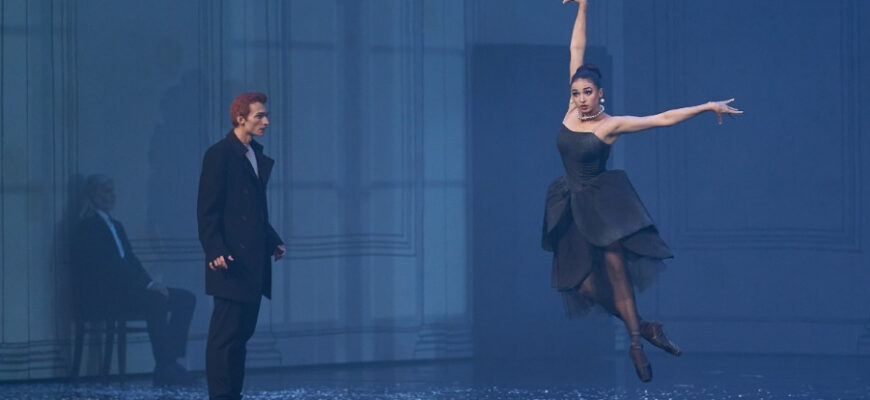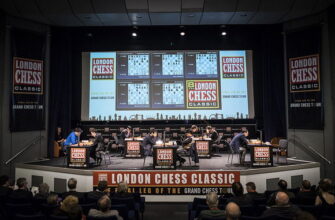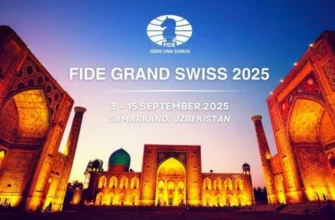Moscow recently played host to a significant cultural event as the Mariinsky Theatre`s ballet company visited the Bolshoi Theatre. This marked the second exchange tour between Russia`s two premier ballet institutions, this time within the framework of a festival dedicated to the music of Igor Stravinsky. The Mariinsky presented a triple bill featuring three one-act ballets set to Stravinsky`s diverse compositions: “Pulcinella,” “Card Game” (Jeu de cartes), and the more recent “Dance Scenes.”
Pulcinella: Echoes of Diaghilev and the Commedia dell`arte
Let us begin with a look back. The genesis of the very first “Pulcinella” ballet lay with Sergei Diaghilev and his then-developing choreographer, Leonid Massine (Myasin). Inspired by performances of the Italian theatre of masks during Diaghilev`s travels, the character of Pulcinella – a witty, sometimes satirical figure from the Commedia dell`arte – became the central idea. Massine delved into 18th-century dance techniques, aiming to set the ballet firmly in that era.
The premiere took place on May 15, 1920, with Diaghilev`s renowned Ballets Russes in Paris. Pablo Picasso designed the sets, a factor that undoubtedly contributed to Igor Stravinsky`s agreement to arrange music primarily attributed to Pergolesi and other less-known composers of the period. This was Stravinsky`s sixth work for Diaghilev`s troupe. Despite the ballet`s enthusiastic reception in Paris and later London, Stravinsky himself recounted the wave of criticism he faced. He was labeled an “imitator” for basing his music on 18th-century Italian themes and accused of “betraying modernism.” Yet, Stravinsky considered “Pulcinella” pivotal, describing it as “an exploration of the past, an illumination through which all my subsequent works came into being.”
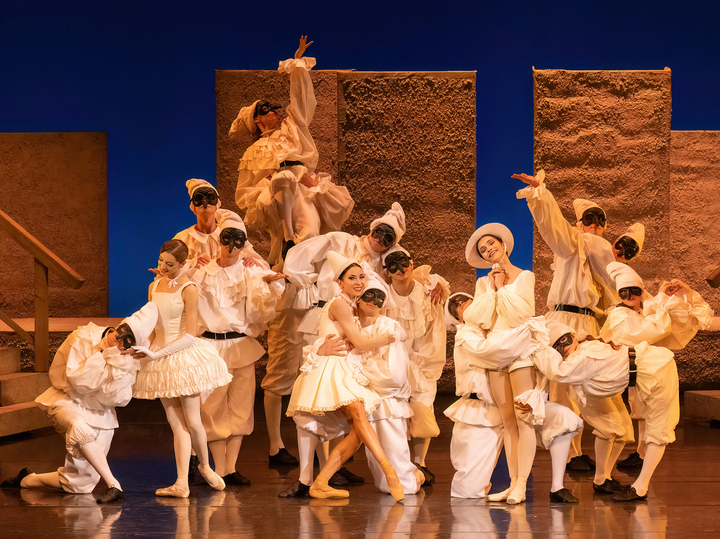
Picasso, like Stravinsky, called it his “very best ballet.” However, Diaghilev`s financial woes at the time led to Picasso`s curtain being left as collateral at the Opéra National de Paris and subsequently lost. Working on the ballet also sparked numerous arguments between Diaghilev and his collaborators. Diaghilev famously threw Picasso`s sketches on the floor and stomped on them before storming out, requiring all his charm the next day to reconcile with the deeply offended artist. Conflicts also flared with Massine. “Pulcinella” was one of the last ballets Massine created for the company before leaving Diaghilev`s “suffocating embrace” eight months later, having finally earned the right to be credited as a full choreographer.
Scholars consider “Pulcinella” to hold an exceptional place in the history of choreography, significantly shaping the future of the Ballets Russes. It allowed Diaghilev to merge his passion for innovation with a return to the past, anticipating a new aesthetic – a call for order and clarity in art after the “chaos” of modernist experiments and the disappointments of war.
Since its premiere, “Pulcinella” has been staged periodically. The Mariinsky Theatre`s current production, choreographed by Ilya Zhivoi in 2018, offers a contemporary take. While those who remembered Massine`s original spoke of its “harmony, unity of elements, a mood of joy and merriment,” Zhivoi`s choreography, at least for the Bolshoi audience, failed to evoke similar feelings. Picasso`s original designs were bursting with color – green for Prudence, blue for her lover, pink for Rosetta, and Tamara Karsavina`s costume as Pimpinella featuring a red tulle skirt, black velvet bodice, white blouse, and green cap, with only Pulcinella in white. In stark contrast, the costumes for the modern production (designed by Sofia Vartanyan) are predominantly white, often paired with traditional black masks. Only a few minor characters wore black.
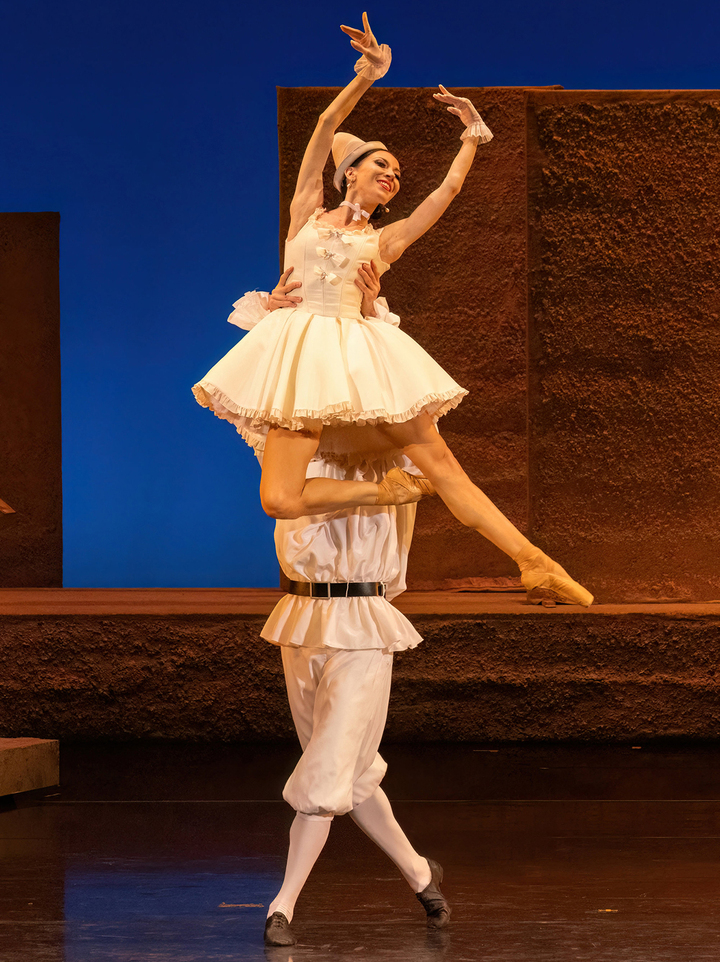
The overwhelming use of white, including the Santorini-inspired stair-based set design, felt excessive. Characters became easily indistinguishable in the uniform paleness. Furthermore, the narrative of this supposedly plot-driven ballet (following Diaghilev`s original libretto) came across as confusing and unclear. Even attempts at clowning failed to generate laughter or amusement in the audience. Perhaps the aesthetics of Commedia dell`arte, so exciting a century ago, simply don`t resonate as strongly today. Despite the technically flawless performances and impressive acting skills of Mariinsky stars like Victoria Tereshkina (Pimpinella) and Alexander Sergeev (Pulcinella), their virtuosity couldn`t quite save the performance from a certain narrative and visual monotony.
Card Game: Shifting Patterns and Color Fields
The evening picked up pace significantly with the second ballet by Ilya Zhivoi, “Card Game,” set to Stravinsky`s music. Created a year after his “Pulcinella,” this work showcased the choreographer`s undeniable talent more effectively. Unlike the stark white of the first piece, “Card Game” featured a vibrant, abstract set (video design by Sergei Rylko and lighting by Konstantin Binkin) that constantly shifted and seemed to live alongside the dancers, complemented by colorful costumes (Sofia Vartanyan) reportedly inspired by Mark Rothko`s paintings. The design deliberately avoided explicit casino or card game motifs.
Igor Stravinsky had a lifelong fondness for card games and was an avid player. He playfully preempted criticism about incorporating fragments of other composers` music into the score for “Card Game,” suggesting that if he had to specify a time and place, it would be “Baden-Baden in the romantic era,” where one might hear melodies by Rossini, Messager, or Johann Strauss.
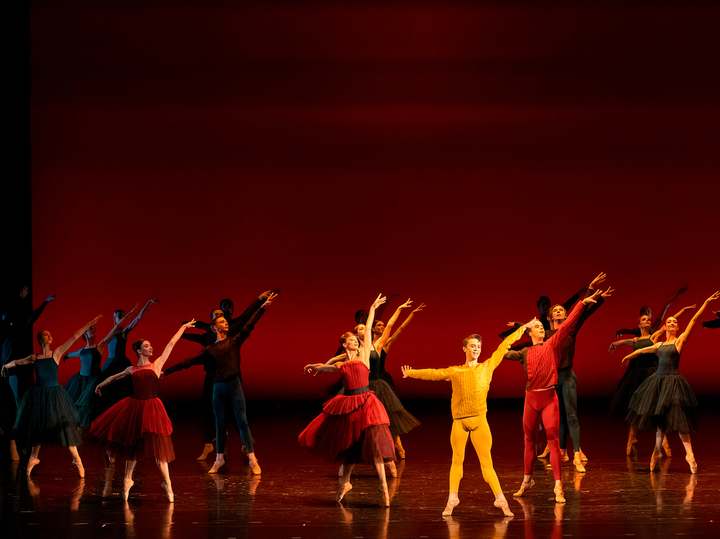
Zhivoi`s creation of a diptych of Stravinsky ballets was not coincidental. George Balanchine, who choreographed the first “Card Game” in 1936 for the American Ballet at the Metropolitan Opera, felt a connection to the spirit of Italian Commedia dell`arte, much like in “Pulcinella.” However, Zhivoi`s concept for his ballet aimed to tell a story not primarily about poker (as Balanchine`s, where the stage represented a card table) but about the relationships between three main characters – the King, Queen, and Joker, portrayed as ordinary people. Still, similar to the first ballet, the narrative thread wasn`t always clear amidst the choreographic complexities. While the `love triangle` was discernible in the dancers` play and movement, it didn`t quite translate into a captivating or gripping story – a common complaint, perhaps, about modern choreographers` ability to prioritize narrative.
Where the ballet truly excelled was in its musical choreography. Zhivoi`s talent for hearing and “seeing the music,” and his ability to build choreographic ensembles, shone through. These ensembles, combined with the scenographic and lighting design, successfully formed a dynamic “color field,” reminiscent of Rothko`s layered canvases.
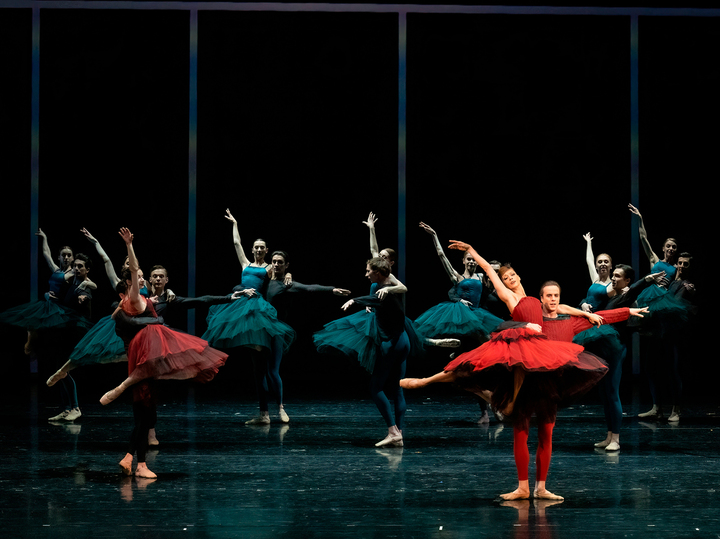
Among the casts, the second performance was particularly strong, featuring the flirtatious Ekaterina Kondaurova as the Queen, the magnificent Konstantin Zverev – impressive both in acting and dance – as the King, and the joyful, 스프링-loaded Yaroslav Baybordin as the Joker (Maxim Izmestyev was also good in the first cast). They brought vitality and character to the abstract interplay.
Dance Scenes: The Climax of Pure Movement
The evening built to a triumphant crescendo with Vyacheslav Samodurov`s ballet “Dance Scenes,” set to Stravinsky`s Symphony in C. Described by the choreographer as “music for gourmets,” the Mariinsky dancers interpreted it with not just emotion but relentless energy. In this non-narrative work, movement and the constantly changing stage space never cease, flashing through different combinations, groupings, compositions, and shifts in weight – bringing to mind Maurice Béjart`s famous phrase, a “boiling pot of dance.” The established dancers like Nadezhda Batoeva, Philipp Stepin, Mei Nagahisa, Yaroslav Baybordin, and Maxim Izmestyev were captivating as always. However, Renata Shakirova and Kimin Kim were particularly outstanding; it was evident that Vyacheslav Samodurov created this ballet heavily inspired by the immense talent of these specific artists.
Overall, the Mariinsky`s Stravinsky evening at the Bolshoi offered a journey from historical revival to contemporary abstraction. While “Pulcinella” faced challenges in translating its historical context to a modern stage, “Card Game” and “Dance Scenes” successfully showcased the Mariinsky`s technical prowess and the choreographers` ability to harness Stravinsky`s complex musical landscapes for dynamic, visually compelling movement. It was a reminder that Stravinsky`s genius continues to provoke, challenge, and inspire new generations of dancers and choreographers.

